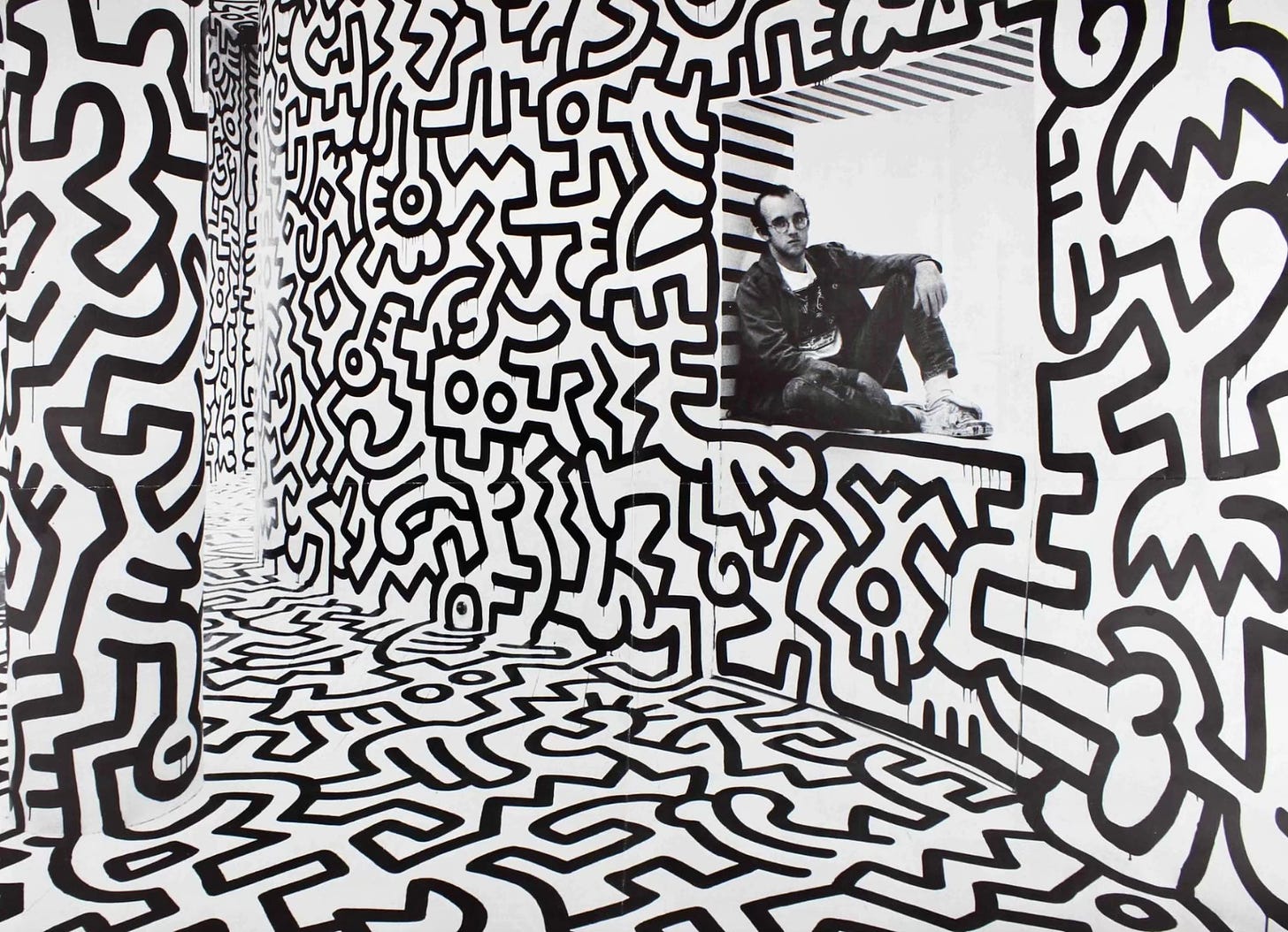Helllloooo GUT peeps. Day 3! You’re doing it! Let’s keep it up.
In case you missed it, there’s FAQ for the GUT’s 30-Day Drawing Habit that should answer your drawing queries. If there’s a question that the FAQ doesn’t address, feel free to email Community@DrawTogether.Studio and we will swoop in to support.
Onwards to Day 3!
Yesterday we drew and colored abstract continuous line doodles. Maybe you noticed how doodling like that can calm our breathing, helped us focus, and lit a creative spark.
Today, we are going to continue with the continuous line drawing while introducing something ICONIC. I mean that literally. And we’re going to build from themes we documented in our New Years Day “More/Less” drawings. (So if you haven’t done yours yet, you probably want to do that first. Here’s the assignment for subscribing GUT members. And the respective chat thread. :)
Inspiration for today’s doodle comes from two artists/activists: Keith Haring and Friedensreich Hundertwasser. Both artists worked with lines and icons, and used repeating patterns in their work. Some might say, they DOODLED.
They also both addressed issues that they cared about within the drawing they created. In a way, they used their drawing practice to manifest more of what they wanted to see in the world. This is similar to what we’re going to do today… so let’s take a quick peek at these two artists work and lives for inspiration.
Keith Haring
Keith Haring (1958-1990) drew more in his three decades on this earth than most do in a long lifetime. Using pen, chalk, and paint as his primary materials, Keith Haring drew his signature icons and patterns across every surface he could find - from subway stops to people’s bodies.

Graphic, vibrant, energetic, and accessible, his playful graphic drawings were infused with icons that addressed social issues of the time, including AIDS awareness, nuclear arms, and drug abuse. Here are a few examples of his icons and their loose meanings.
Haring died of AIDS at the too young age of 31.
Friedensreich Hundertwasser
Friedensreich Hundertwasser (1928-2000) was an Austrian artist whose infused his vibrant patterned drawings and paintings with his conviction around environmentalism and ecology. A Jew who lost most of his family to the camps in the Holocaust, his strong sense of moral responsibility runs throughout his work - and life. His work often incorporated nature and architecture related iconography as a starting point for his abstract and vivid patterns.
“Art must fight with us; art must be an ally of mankind. The world was never so turbulent as just now and art should not escape or flee this world.’ - Hundertwasser
His work, full of wavy lines and patterns, are a reflection of his ethos that art should reflect nature and that there should be no straight lines.
“The straight line is godless and immoral. The straight line is not a creative line, it is a duplicating line, an imitating line. In it, God and the human spirit are less at home than the comfort-craving brainless intoxicated and unformed masses.”
- Hundertwasser
Maybe Hundertwasser’s resistance to straight lines can be helpful to those of us who worry about getting things “right.” He really believed in letting art evolve organically and reflect nature.
Find me a straight line in nature. No such thing.
Which takes us to our assignment for the day!











